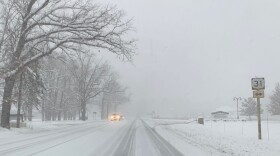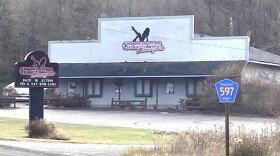A ceremony to kick off the return of Arctic grayling to northern Michigan is taking place Monday, May 12 at 1 p.m. at the Oden State Fish Hatchery Visitor Center in Alanson.
The Arctic grayling is a silvery blue salmonoid species native only to Montana and Michigan in the contiguous United States. But habitat loss and competition from non-native fish species decimated those populations, and grayling haven’t swum in Michigan rivers since the 1930s.
Now, biologists are hoping to reintroduce grayling to three Lower Peninsula rivers: the Boardman-Ottaway, the Maple and the Manistee.
The Michigan Department of Natural Resources will provide 400,000 grayling eggs harvested from the Chena River in Alaska to the Little River Band of Ottawa Indians, the Grand Traverse Band of Ottawa and Chippewa Indians and the Little Traverse Bay Bands of Odawa Indians.
Biologists at the three tribes will lead restoration efforts on the rivers.
"This is one of those fish that were here when the tribe’s ancestors were here and interacting with those fish, and it's important to reconnect that interaction with the people, and the fish, and the environment," said Dan Mays, a biologist with the Grand Traverse Band when he spoke to IPR about grayling restoration in January.
Grand Traverse Band biologists plan to rear the grayling in a streamside facility alongside the Boardman-Ottaway River this spring, which they hope will give the fish a better chance at survival upon release.
"We're going to be imprinting these fish, raising them in the waters where they're going to be released, so they get acclimated to the water conditions," Mays said in January. "They hone in on the chemical cues in the water, so hopefully they return to those same sites to reproduce"
The ceremony in Alanson on Monday, which will include prayers and a drum ceremony, is open to the public.






